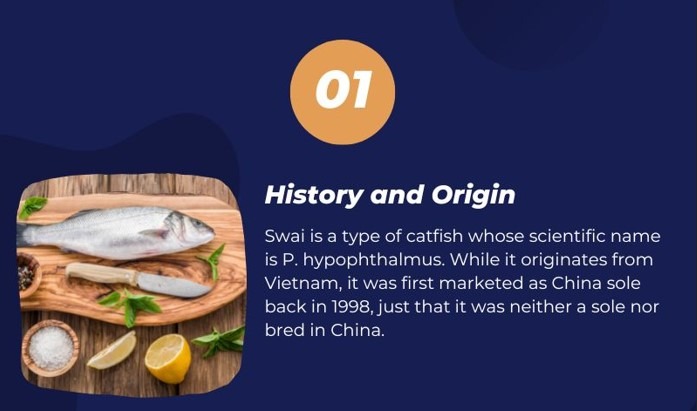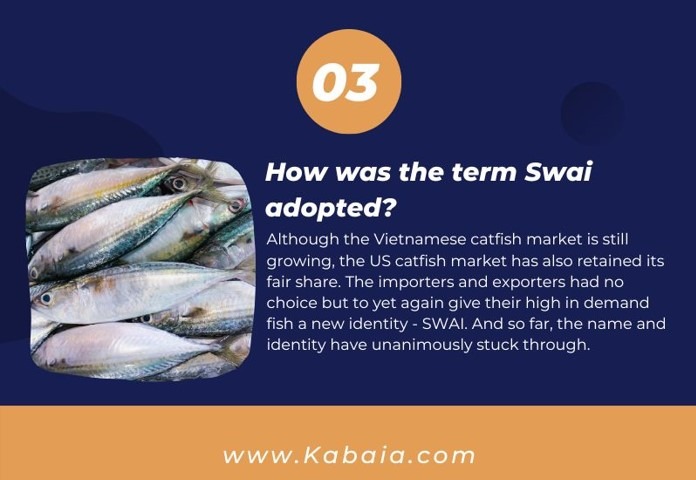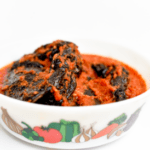Swai fish, locally known as Tra, is a tropical fish originating from the two giant Asian rivers – Mekong and Chao Phraya. Today, it is massively harvested and exported from Vietnam, where it is grown in the Mekong Delta.
But really where does swai fish come from?
To answer the question requires digging into some US export history.
But Swai didn’t make it into the US market as quickly. Swai fish history is tricky to understand as It had to undergo many identity changes. It was much later, in 2003, that it was named Swai.
But that didn’t put an end to its misery. To date, a ton of identity theft goes around this particular fish species, as researched and documented by Forensic Science International Reports.
This perilous journey has resulted in a ton of confusion regarding Swai fish origin and history.
But after lots of research, we have cracked the code.
Swai is a type of catfish whose scientific name is P. hypophthalmus. While it originates from Vietnam, it was first marketed as China sole back in 1998, just that it was neither a sole nor bred in China.


How did Swai make its place in the US market?
When trade with Vietnam finally began in 1994, after Bill Clinton lifted the trade embargo, US importers started to ship Basa (P. Bucoriti) fish filets from Vietnam to California. The fish was sold as skinless, boneless, and ready-to-use fillets. Though people found it a little expensive, given it was a white flesh fish with an unheard name.
Four years down, in 1998, the trade of Basa was slow but steady, although still considered expensive. But by now, the people had started liking the taste and texture that went well with most cuisines and dishes.
This was precisely when Tra was put into the market under China Sole’s fake name.
Now, if you look at it, Tra or Swai is inferior in taste and size compared to Basa. But it is also far cheaper to raise and can thrive well in the smallest fish farms without requiring expensive aeration.
But exporters didn’t want the fish to look inferior. Hence, they thought giving it a new identity might help elevate business.
See also: Does Swai Fish have Fins and Scales? Find Out Now!
At the same time, many exporters simply chose to call it Basa, as this name had already been made someplace in the market.
Although this trick worked, it created more significant confusion down the road. Exports of frozen, fileted fish were through the roof within a year.
While exporters enjoyed their profit, US importers were determined to differentiate between Tra and Basa. So a few importers started to call Tra River Cobbler instead, adding more to the confusion.
But the absolute chaos started when some importers began calling it catfish. This way, people didn’t know whether it was farmed in the Mekong river of Vietnam or here in the Mississippi river.
Although it wasn’t as hard to differentiate between the two, importers were only concerned that they had to pay less than half the price compared to domestic catfish grown in the US.
This is how Swai fish made a solid place in the US market, just not yet under the name Swai.


How was the term Swai adopted?
In the following years, Vietnamese ‘catfish’ sales tripled. The demand for more cleaned, skinless, and frozen filets at half the price of domestic catfish was growing daily.
Not that the domestic catfish businesses were plummeting. They, too, were experiencing massive production increases.
Vietnamese imports became a solid threat when a troop of American catfish producers visited the catfish farms in Vietnam—hoping to see below-par production and hygiene. But they were utterly wronged.
They realized that the Vietnamese catfish industry could soon become a massive threat. Especially after the support, they were getting from the Vietnamese Government.
The last nail in the coffin was put by some of the restaurants and casinos near Mississippi. They had switched from locally bred catfish to the Vietnamese catfish or, as we now call it, Swai. Back then, it was still catfish, river cobbler, China sole, or Basa. Whichever it was, it was far less pricey than US-raised catfish.
And it was hard for restaurants and casinos not to bag such a deal, especially when the consumers could not tell the difference in taste or texture.
But this was just the beginning. By the year 2001, Vietnamese exports had risen by 300%, while a plummet in the US catfish prices was detected.
You may also be interested in: Swai fish vs Catfish
The US industry was far too established to let the Vietnamese take complete control.
That’s where the smear campaigns began.
The US catfish were now being advertised as ‘homegrown‘ while those imported from Vietnam were labeled as ‘grown in third world countries‘.
But that wasn’t enough to keep the catfish business from plummeting. As long as Vietnamese fish farmers were harvesting fish, the domestic catfish prices would feel the pressure, as deduced by research. As of now, the Vietnamese farmers were harvesting more than 60,000 tons of Swai fish, and the number was only going to rise.


Soon the Ministry of Fisheries and Food and Drug Administration took notice. They all had their own rules and legislations to put forward, but none of them made much sense. The domestic catfish prices were still plummeting.
Until Congress passed a law in 2003 stating that all products must include a set of labels about their origin, which state they were harvested in, whether they were imported, caught in the ocean, etc.
But more importantly, Congress also stated that no catfish other than from the family of Ictaluridea could now be sold under the name of catfish.
This put an end to the growing chaos. Although the Vietnamese catfish market is still growing, the US catfish market has also retained its fair share.
The importers and exporters had no choice but to yet again give their high in demand fish a new identity – SWAI. And so far, the name and identity have unanimously stuck through.
However, there still have been hundreds of cases reported where Swai is often confused for another fish, sometimes knowingly and not too often, unknowingly.
To conclude, despite the confusing Swai fish history and limited location, Swai fish sales have been on the rise since it first landed on the US West coast as China Sole. We hope the history we have provided has answered the question of where does swai fish come from.
Feel free to share your feedback using the comment box below. We will love to hear from you.




